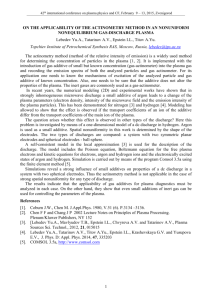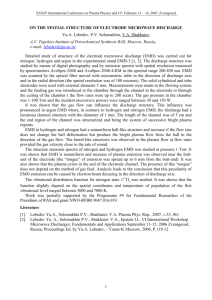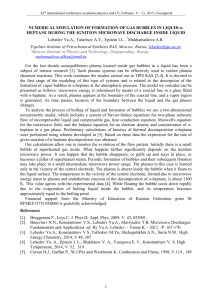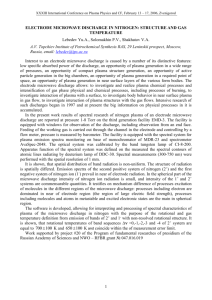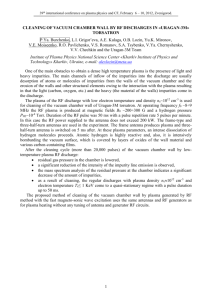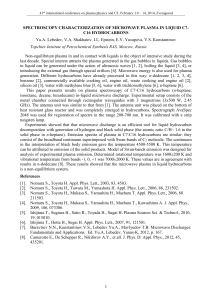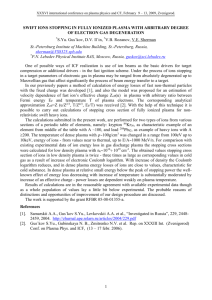modeling of electrode microwave discharge in hydrogen and nitrogen
advertisement
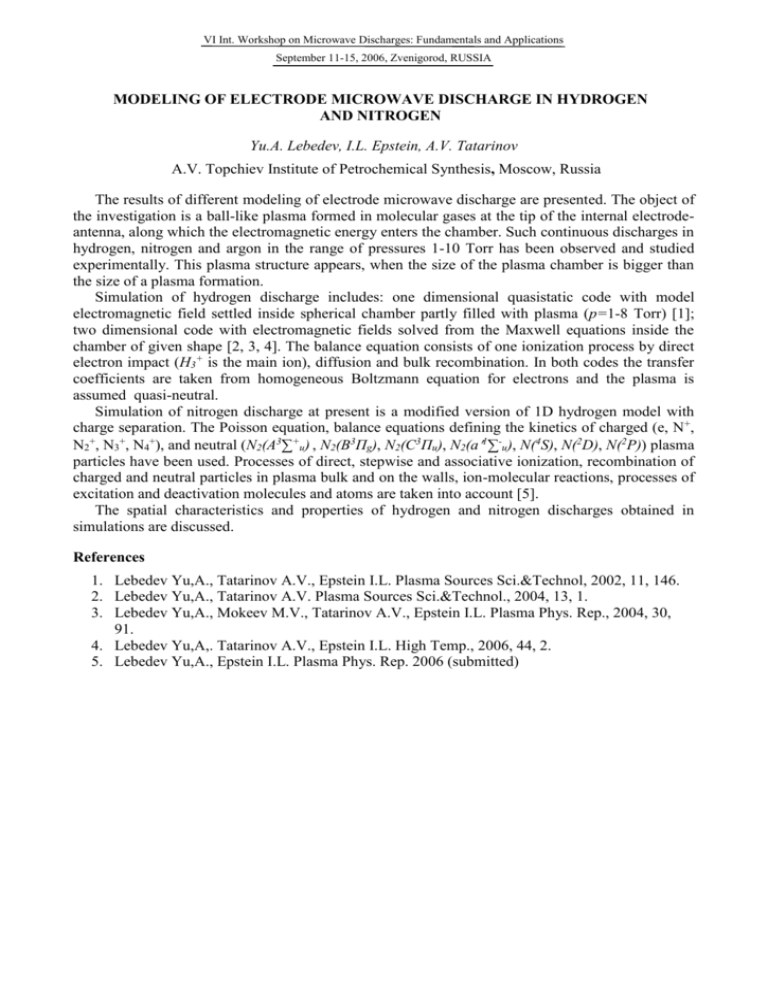
VI Int. Workshop on Microwave Discharges: Fundamentals and Applications September 11-15, 2006, Zvenigorod, RUSSIA MODELING OF ELECTRODE MICROWAVE DISCHARGE IN HYDROGEN AND NITROGEN Yu.A. Lebedev, I.L. Epstein, A.V. Tatarinov A.V. Topchiev Institute of Petrochemical Synthesis, Moscow, Russia The results of different modeling of electrode microwave discharge are presented. The object of the investigation is a ball-like plasma formed in molecular gases at the tip of the internal electrodeantenna, along which the electromagnetic energy enters the chamber. Such continuous discharges in hydrogen, nitrogen and argon in the range of pressures 1-10 Torr has been observed and studied experimentally. This plasma structure appears, when the size of the plasma chamber is bigger than the size of a plasma formation. Simulation of hydrogen discharge includes: one dimensional quasistatic code with model electromagnetic field settled inside spherical chamber partly filled with plasma (p=1-8 Torr) [1]; two dimensional code with electromagnetic fields solved from the Maxwell equations inside the chamber of given shape [2, 3, 4]. The balance equation consists of one ionization process by direct electron impact (H3+ is the main ion), diffusion and bulk recombination. In both codes the transfer coefficients are taken from homogeneous Boltzmann equation for electrons and the plasma is assumed quasi-neutral. Simulation of nitrogen discharge at present is a modified version of 1D hydrogen model with charge separation. The Poisson equation, balance equations defining the kinetics of charged (e, N+, N2+, N3+, N4+), and neutral (N2(A3∑+u) , N2(B3Пg), N2(C3Пu), N2(a1∑-u), N(4S), N(2D), N(2P)) plasma particles have been used. Processes of direct, stepwise and associative ionization, recombination of charged and neutral particles in plasma bulk and on the walls, ion-molecular reactions, processes of excitation and deactivation molecules and atoms are taken into account [5]. The spatial characteristics and properties of hydrogen and nitrogen discharges obtained in simulations are discussed. References 1. Lebedev Yu,A., Tatarinov A.V., Epstein I.L. Plasma Sources Sci.&Technol, 2002, 11, 146. 2. Lebedev Yu,A., Tatarinov A.V. Plasma Sources Sci.&Technol., 2004, 13, 1. 3. Lebedev Yu,A., Mokeev M.V., Tatarinov A.V., Epstein I.L. Plasma Phys. Rep., 2004, 30, 91. 4. Lebedev Yu,A,. Tatarinov A.V., Epstein I.L. High Temp., 2006, 44, 2. 5. Lebedev Yu,A., Epstein I.L. Plasma Phys. Rep. 2006 (submitted)
